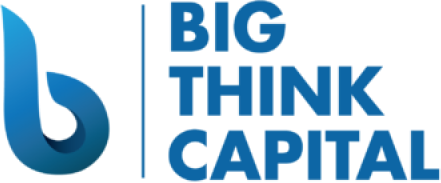The Impact of 2025 Inflation Trends on Small Business Financing and How Alternative Funding Options Can Help
Estimated reading time: 5 minutes
- Inflation in 2025 remains above historical averages.
- Traditional financing options are becoming more challenging for small businesses.
- Alternative funding options provide quicker and more flexible solutions.
- Regular cash flow assessments are vital for managing finances effectively.
- Diversifying funding sources can help stabilize cash flow.
Table of Contents
- Understanding Inflation and Its Implications
- The Current State of Inflation in 2025
- How Inflation Affects Small Business Financing
- Alternative Funding Solutions
- Practical Insights for Business Owners
- Conclusion
- FAQ
Understanding Inflation and Its Implications
Inflation refers to the rate at which the general level of prices for goods and services rises, eroding purchasing power. According to the U.S. Bureau of Labor Statistics, the Consumer Price Index (CPI) saw a significant increase in 2024, largely driven by supply chain disruptions and rising demand as the economy rebounded from the COVID-19 pandemic. Forecasts from the Federal Reserve suggest that while inflation is projected to moderate, it may stay above historical averages through 2025.
The Current State of Inflation in 2025
In early 2025, inflation rates hover around 4.8%, slightly down from the highs of 2024 but still significantly above the Federal Reserve’s target rate of 2%. This sustained inflation presents several challenges for small business owners:
- Increased Operating Costs: Rising prices for raw materials, labor, and utilities can squeeze profit margins, making it essential for businesses to manage their finances carefully.
- Interest Rate Fluctuations: In response to inflation, the Federal Reserve has increased interest rates to curb spending. As borrowing costs rise, obtaining traditional financing becomes more expensive for small businesses.
- Consumer Spending Behavior: Inflation can lead consumers to tighten their budgets, impacting sales and cash flow for businesses.
How Inflation Affects Small Business Financing
The impact of inflation extends beyond immediate costs. It also affects how small businesses approach financing options. As inflation rises, so do interest rates, making it harder for small business owners to qualify for traditional loans. Here are some key points to consider:
Traditional Lending Challenges
- Higher Interest Rates: As of early 2025, average business loan rates have increased. The interest on a five-year fixed-rate loan from traditional banks may reach upwards of 9-10% due to rate hikes aimed at controlling inflation.
- Stricter Lending Criteria: Financial institutions often impose stricter lending requirements during inflationary periods, making it difficult for small businesses with thinner margins to secure financing.
Alternative Funding Solutions
In light of these challenges, alternative funding options have become an essential resource for small businesses. These avenues provide more flexible requirements and quicker access to capital, helping businesses stay afloat amid rising costs.
Types of Alternative Funding Options
Big Think Capital specializes in various alternative funding options designed to meet the unique needs of small businesses. Here are some solutions that can help:
1. Working Capital Advances
Working capital advances provide a quick funding solution for businesses needing immediate cash flow. These advances are typically easier to qualify for than traditional loans, making them accessible for businesses that may struggle under stricter criteria. This funding can be used for various short-term needs, such as:
- Purchasing inventory
- Covering payroll
- Upgrading equipment
2. Equipment Financing
When inflation increases the cost of purchasing new equipment, equipment financing offers a way to acquire necessary machinery without significant upfront costs. This financing solution is particularly advantageous for businesses in industries like manufacturing or construction. Key benefits include:
- Lower monthly payments
- Preserving cash flow
- Ownership potential once the financing period concludes
3. Merchant Cash Advances (MCA)
A merchant cash advance provides an advance based on future credit card sales. This option is particularly beneficial for retail and service-based businesses that experience fluctuations in sales. The repayment is linked to daily credit card transactions, allowing for more manageable payments during leaner months.
4. SBA Loans
The Small Business Administration (SBA) offers government-backed loans that, while sometimes requiring a longer application process, have lower interest rates than traditional loans. SBA loans are an excellent option for small businesses looking for stability and longer repayment terms.
5. Lines of Credit
A business line of credit offers flexibility, allowing business owners to access funds when needed without reapplying for a loan. This option is suitable for covering unexpected expenses and managing cash flow in a fluctuating economic environment.
Practical Insights for Business Owners
Navigating the 2025 inflation landscape can be daunting, yet there are proactive steps small business owners can take to secure financing and maintain growth.
Insight #1: Assess Cash Flow Regularly
Conduct regular cash flow assessments to understand your financial position and make informed funding decisions. Being proactive allows you to identify potential shortfalls before they arise, eliminating last-minute scrambles for cash.
Insight #2: Explore Diverse Funding Options
Don’t rely solely on traditional loans. Investigate a range of alternative funding options. Maintaining a diversified funding approach can help stabilize cash flow and ensure you have access to capital when necessary.
Insight #3: Budget for Inflation
Factor in inflation when creating budgets and financial forecasts. Understanding that costs may continue to rise can help prepare your business for future challenges, ensuring you maintain profit margins.
Conclusion
Inflation trends in 2025 have presented unique challenges and opportunities for small business financing. Understanding these trends is essential for making informed financial decisions. Fortunately, alternative funding options like working capital advances, equipment financing, MCAs, SBA loans, and lines of credit can provide the necessary flexibility and accessibility for small businesses during these uncertain times.
At Big Think Capital, we are committed to offering tailored financial solutions that empower small business owners to thrive in an ever-changing economic landscape. If you’re exploring funding options or need assistance navigating the challenges posed by inflation, we are here to help.
Learn more about how we can support your business financing needs at bigthinkcapital.com or speak with one of our funding experts today. Having the right financial tools can make all the difference in successfully managing your business through these inflationary times.
FAQ
What is inflation?
Inflation is the rate at which the general level of prices for goods and services rises, leading to a decline in purchasing power.
How does inflation impact small businesses?
Inflation can increase operating costs and interest rates, making traditional financing more challenging to obtain.
What are alternative funding options?
Alternative funding options include working capital advances, equipment financing, merchant cash advances, SBA loans, and lines of credit, which offer more flexible and accessible financing solutions.
How can I assess my business’s cash flow?
Regularly monitor your income and expenditures to understand your financial position better and make informed funding decisions.
Should I diversify my funding sources?
Yes, diversifying your funding sources can help stabilize cash flow and ensure access to capital when needed.






